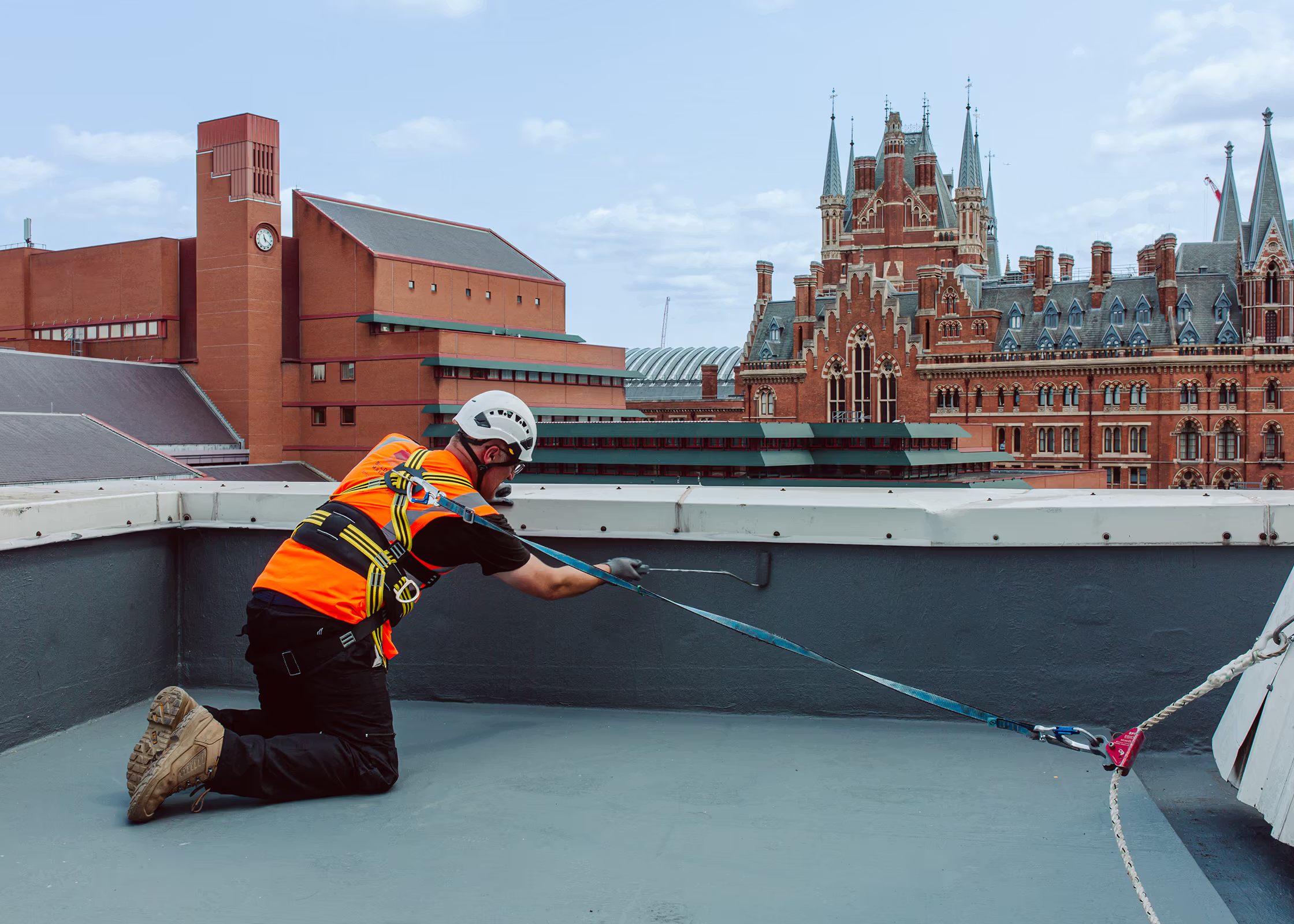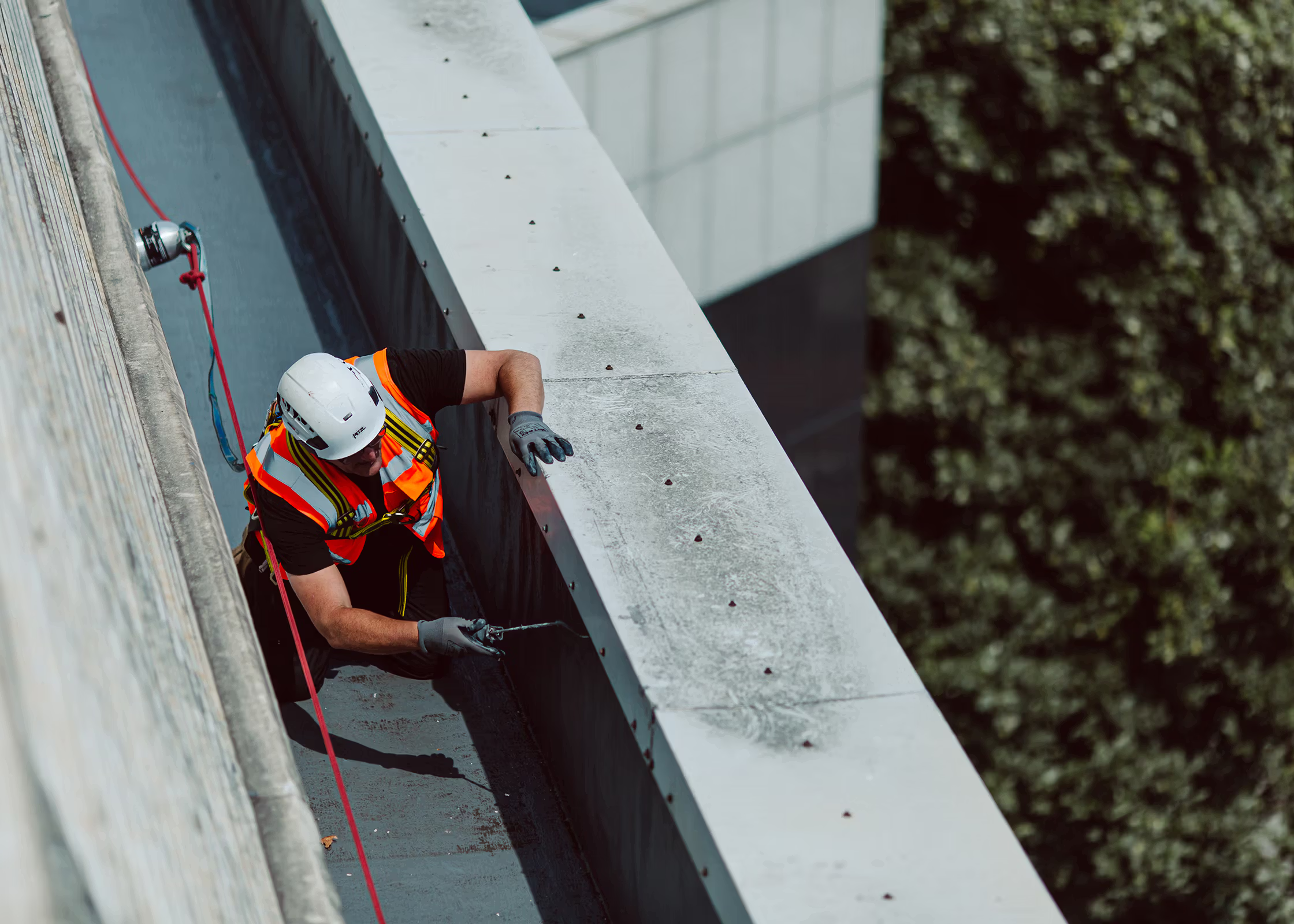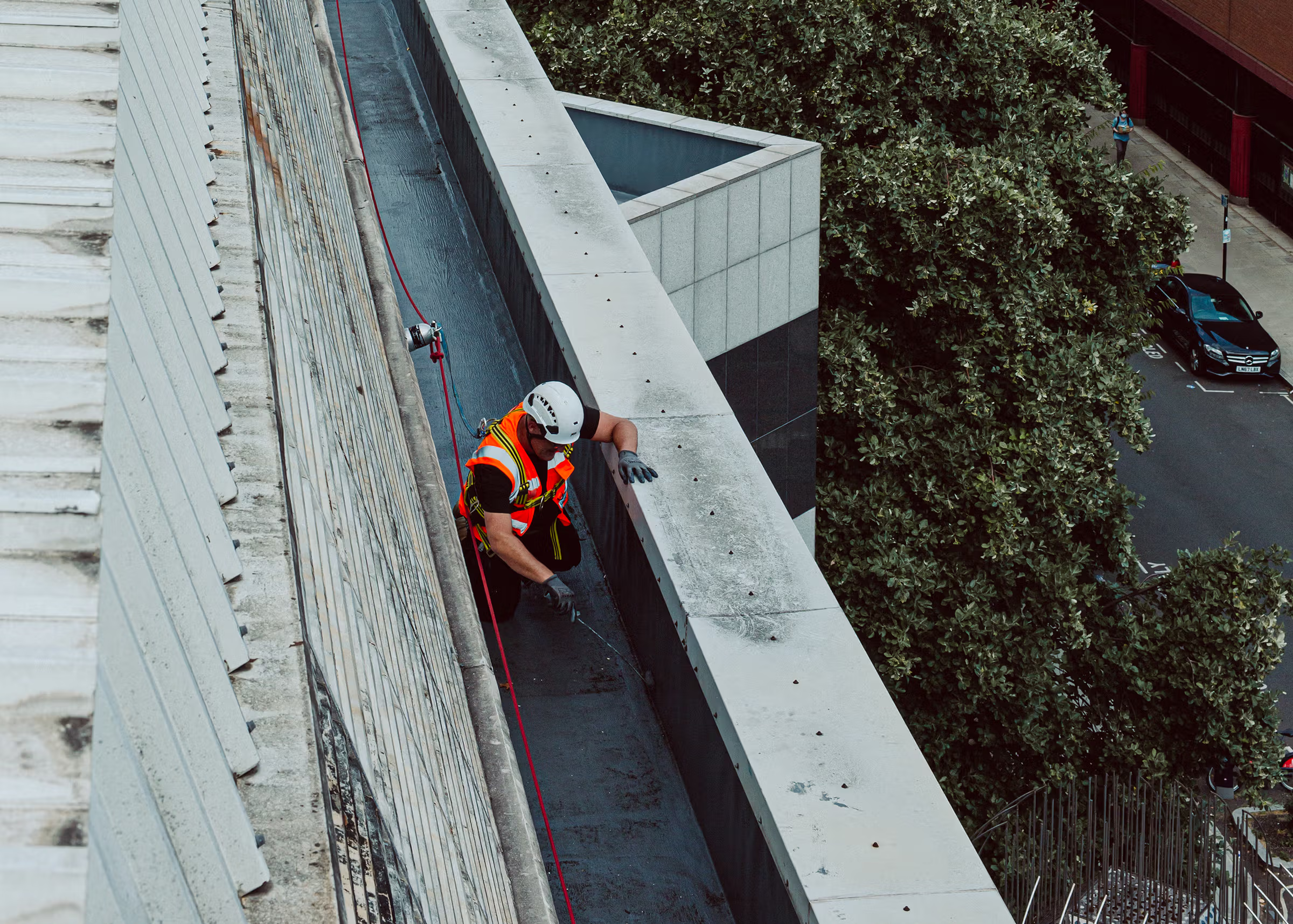Introduction
The Pullman Hotel is situated on the busy Euston Road, close to St Pancras Station and the British Library in Central London.
The hotel comprises several interconnected buildings, and despite each roof being repaired and maintained over the years, a number had finally reached the point where repairs and patching were no longer viable or cost-effective.
As part of our ongoing relationship with Accor Hotels, Building Transformation returned to the Pullman Hotel to survey five further roof sections and then, based on our findings of the roof condition survey, upgrade the thermal insulation and apply a new liquid waterproofing system.
Roof Condition Survey
The survey showed that all inspected areas fell short of the minimum thermal performance standards mandated by Building Regulations Part L, and a thermal upgrade was necessary to achieve a U-value of 0.18 W/m²K.
As part of our detailed condition survey, core samples were taken. Core sampling offers an essential insight into what lies beneath the roof membrane. A core sample involves physically removing a small section of the waterproofing system to assess the full build-up, from surface to deck to determine the presence, extent, and location of moisture ingress.
The core samples taken were found to be saturated, indicating entrapped moisture or water ingress and were no longer in a satisfactory state to provide a sound surface for receiving a new overlay system.
If not replaced, the entrapped moisture will eventually evaporate, causing damage to any new layer above it. Therefore, a full flat roof replacement was recommended.
Flat Roof Replacement
To bring the multiple roof areas in line with previous work undertaken, each roof was completely stripped of the existing roofing materials and replaced with:
- Proteus Pro-Cold Built-Up Liquid Waterproofing Roof System
- 130mm Pro-Therm PIR flat-board insulation; to comply with part-L of the building regulations and achieve 0.18W/m2K.
To minimise disruption to hotel guests, all materials were transported via the back-of-house stairs at the rear of the hotel and taken onto the roof either via the plant room or a specifically designated out-of-service hotel room.
Although the roofs have a parapet wall, it is below the safe required limit of 1100mm, so temporary man-safe systems were deployed, including fitting a ‘running line’ to the louvres to provide safe access to the narrow area of the upper roof.
All works were carried out in accordance with all current relevant legislation, and recommendations from the Health & Safety Executive (HSE) including HSG33 Health & Safety in roof work and are covered by a 20-year Proteus Insurance Backed Guarantee.
Project Considerations
As with any external restoration and replacement project, the general weather and wind conditions were monitored throughout, and the programme was designed flexibly to ensure that all the phases of work, including the removal and replacement of the membranes, may be carried out when the optimal conditions allow.
The new roof lining and coatings were only applied when weather conditions allowed, as doing so outside of these conditions could prevent full adherence and waterproofing, whilst also affecting the warranty provision. These systems generally perform best and cure to the correct level when applied between a range of 5 and 25 degrees.
If you would like to discuss your next roof replacement project, get in touch with our award-winning team today.


